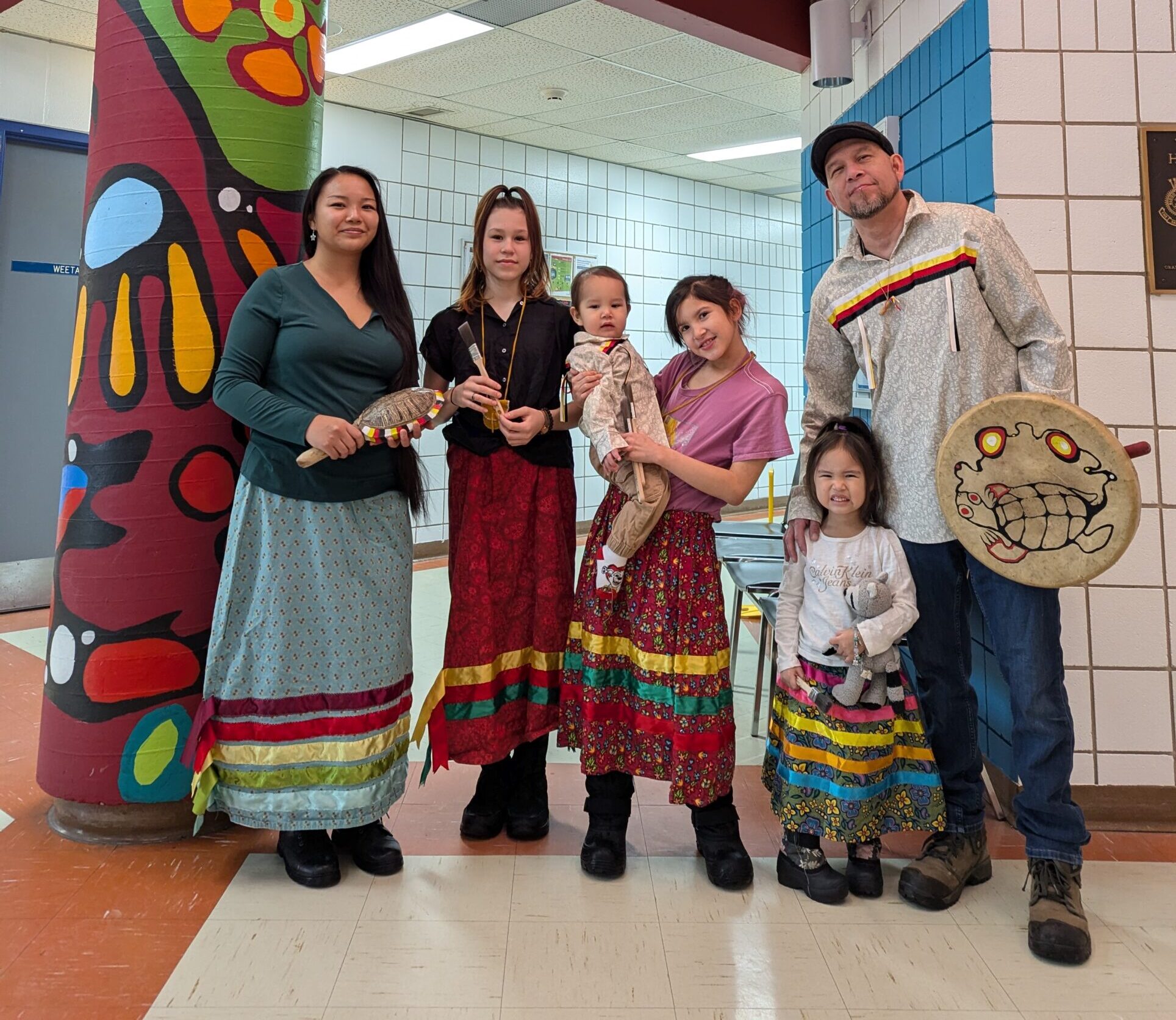
Welcoming Community with Traditional Art
The pillars flanking the doors to the chapel at Winnipeg’s Weetamah Corps welcome visitors with bright new images depicting the Seven Sacred Teachings. Seven colourful animals are accompanied by traditional woodland-style motifs reaching to the ceiling and freshly painted walls with pictures of a thunderbird and a teepee.





The sanctuary is the heart of the building, everything that takes place here: the classrooms for literacy, upskilling and computer skills, the kitchen and food pantry that feeds the community, the gym that houses the Christmas toy program and other activities, and the spaces shared with other community organizations all flow from the centre. The new mural intends to make the entrance more welcoming, acknowledge the land on which the building sits, honour the people who visit the building and share the teachings with everyone who enters.
The mural was created by Manitoba artist David Boulanger, whose spirit name is Gwiiwizenz Dewe’igan niindigo, which means Little Boy Drum. He is Anishinaabe from Peguis First Nation. Boulanger teamed up with Robert Aymont to paint the walls, and his family helped paint the pillars.

Boulanger recalls the “happy accident” of being asked to paint the mural:
“My wife and kids and I were working in the building with a group of residential school Survivors, sharing land-based knowledge and cultural practices on the land. A good friend referred us to Captain Scott, and I thought this would be a perfect opportunity to share a visual interpretation of some of our culture in the building as well.”
Captain Ian Scott, the Corps Officer at Weetamah at the time, and Boulanger discussed their shared vision of expressing and sharing something symbolic of reconciliation, inclusion, and indigenizing the space.
The mural depicts the Seven Sacred Teachings of courage, respect, wisdom, humility, honesty, love, and truth, each represented by a different animal. The bear represents courage, the bison represents respect, the beaver symbolizes wisdom, the wolf represents humility, the sabe (or sasquatch) symbolizes honesty, the eagle represents love, and the turtle stands for truth. The teachings, also known as the Seven Grandfathers, originate from the Anishinaabe people and make up the laws of living a good life in peace and harmony with all of creation and a moral respect for all living beings.
“I figured it was a good opportunity to share the ‘real’ understanding and open the conversation about the significance of these teachings. We were hoping to begin the conversation about decolonizing the understandings of these words and meanings and help shed some light on our beliefs and practices through this mural,” says Boulanger.
Boulanger has been a multi-media artist since the 1990s. His band Burnt-Project 1 won Aboriginal Recording of the Year at the 2006 Juno Awards. Boulanger’s wife, Janine Twoheart, creates jewelry, authentic traditional art, and cultural and ceremonial items for community and personal ceremonial use.
“I started about seven years ago when I met David. He introduced me to the culture because I didn’t grow up with it, and then it just blossomed from there,” she says. “I really jumped into it, and it was something that I am very passionate about and genuinely love, making traditional art, learning, culture sharing and preserving beautiful traditions and practices.”
You can find her creations on Facebook and Instagram on her page By Niizhode. The couple’s four children, Mino’de (kind-hearted person) and Isbyming (the heavens), Nyaabe (looks in the future in a good way) and Aadizookaan (the legend/the collective knowledge of the people/the scared stories), have always been surrounded and included in cultural activities and ceremony when the family visits and works in the community. The two eldest helped paint the pillars at Weetamah. Art is truly a family affair!

“It’s so beautiful to be able to share it with the family. As the girls are getting older, they want to be a part of it, too. And they are our future,” says Twoheart. “Because my family wasn’t very traditional, it’s beautiful to pass it on to our family that we made together so the traditions and practices live on.”
Boulanger has also been tapped to paint another mural for the Winnipeg Centre of Hope’s SonRise family shelter in the near future.
The Salvation Army is committed to advancing Truth and Reconciliation. Learn more by visiting Indigenous Ministries – Salvation Army Canada.
The Salvation Army acknowledges that we gather and worship on the traditional lands and waters of various Indigenous Nations throughout Canada and Bermuda. In the spirit of reconciliation, we are committed to respectful relationships with the original caretakers of the land.
We commit ourselves to prayer—to listen and learn and to seek and walk gently with all of our relations.